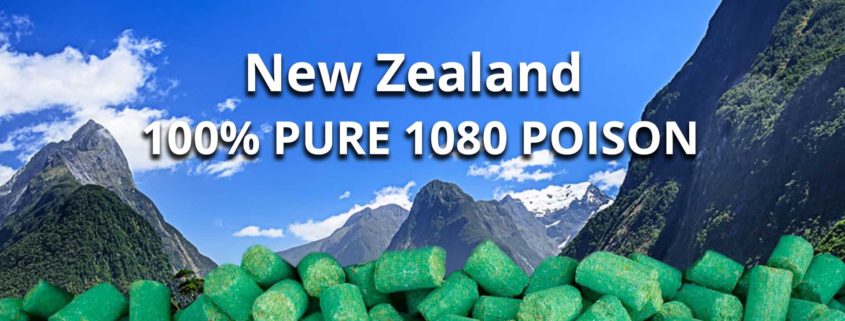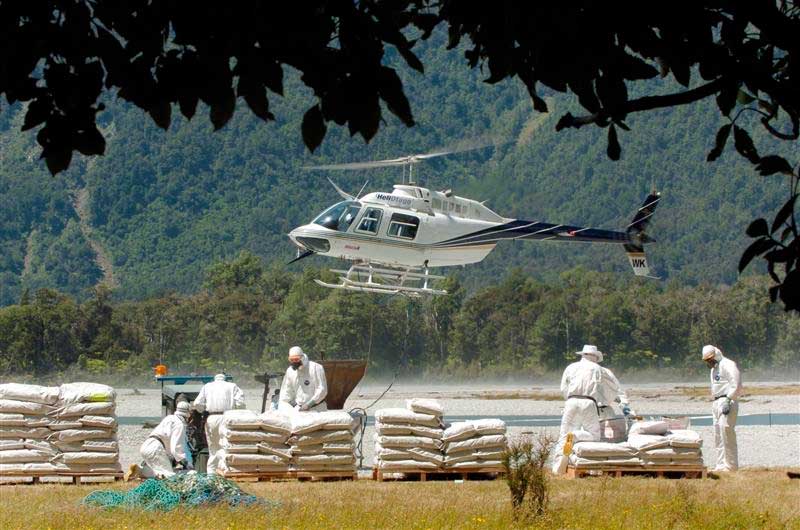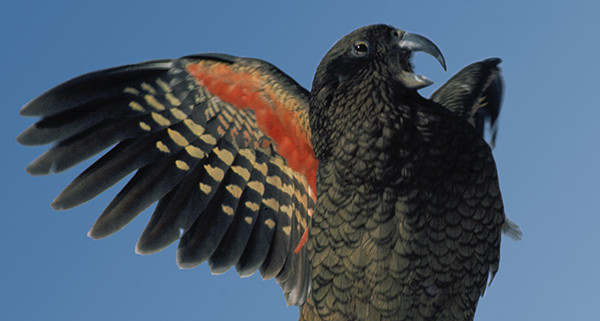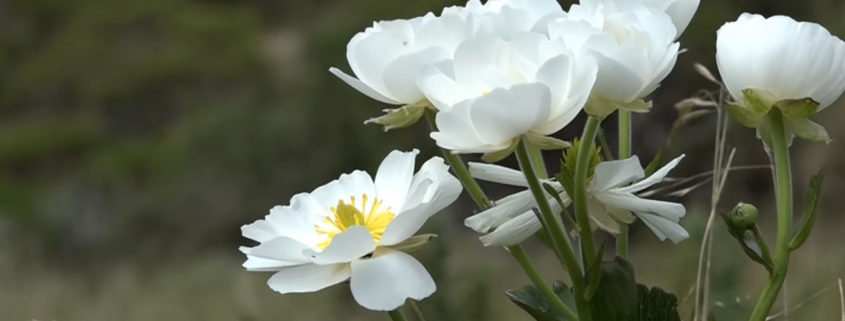- An average of 12% of marked kea have been reported dead within the first few days of aerial poisonings (DoC, 2016; Kemp et al., 2016, unpublished); range up to 78% (Graf, 2011). (Figures do not include later deaths from carcass scavenging or slow deaths from poisoning.)
- There are very few kea: the total number is unknown (Roberts, 2014) but estimates as low as 1000 individuals have been made since 1986 (Bond & Diamond, 1992; Harper, 2012; Roy, 2016).
- 1080 causes many hours of suffering before death. DoC has been criticised for not acknowledging the suffering the poison causes to a very wide range of non-target species (ERMA, 2007).
- Sub-lethal effects of 1080 on birds include damage to testicular morphology (Balcomb et al. 1983) and heart and wing muscles (Ataria et al, 2000).
- Scientists concluded that stoats and possums were NOT a threat to kea nests (Jackson, 1969; Elliott & Kemp, 1999)
- The studies DoC has made of kea are artefacts: nests repeatedly visited and interfered with by humans and showing high levels of disturbance (Orr-Walker, 2012). In contrast, nesting kea are normally secretive; the hen takes years to build her nest and uses it for life (Jackson, 1963).
- DoC claims to have measured a “benefit” from better nest survival of kea after 1080 poisoning at Okarito. This was an unscientific, unreplicated study in one area. As usual the 1080 killed adult kea and was followed by large increases in mice, rats, then a stoat plague in late 2012 (Kemp et al., 2015, unpublished) which was dishonestly cut from the published study’s graph (Kemp et al., 2018).
- Even though DoC has invested thousands of hours videoing kea nests, there is very little evidence that stoats ever prey on kea & none of it has been published for scientific scrutiny (Pollard, 2017).
Even if stoats were a major predator of kea, then poisoning with 1080 is a poor method of controlling them because:
- 1080 poison results in highly variable kill rates of stoats (they don’t eat cereal baits so have to eat poisoned creatures to die) (King & Murphy, 2005; Dilks et al., 2011; Kemp et al., 2014, unpubl.).
- Stoats are unlikely to be poisoned by preying on mice, because mice do not normally eat 1080 pellets (Fisher & Airey, 2009).
- Stoats are unlikely to be killed by preying on rats in alpine kea habitats, because very few rats live there (Christie et al., 2016).
- Stoats that remain after poisoning can “prey-switch” to eat more birds than beforehand (DoC, 2002; King & Murphy, 2005).
- The escalations in rodent numbers which follow 1080 operations are likely to fuel increases in stoat numbers (Byrom et al., 2013).
- Natural stoat plagues last for only a few months before crashing naturally (King 1984; 1990).
- Survival of kea adults, rather than any short -term threat to nests, is more important, because they are a long-lived species with a high juvenile mortality rate (largely due to starvation; estimated as 50-68%) (Jackson, 1969; King, 1984; Bond & Diamond, 1992).
- Any risk is spread because the kea nesting season is very broad (Jackson, 1963) and only a portion of adults breed in any year (Kemp et al,. 2016, unpublished; Jackson, 1963).
- There are indications that kea nesting increases in mast years (Kemp et al., 2015a, cited in DoC, 2016, unpublished) potentially offsetting any increase in stoat predation.
- Fears that a mast-driven stoat plague would devastate birds in the Murchison Mountains turned out to be unfounded; when the food supply (mice) crashed, stoats shifted to eating ground weta, not birds (Smith & Jamieson, 2003).
- Masting vegetation is not a reliable indicator of stoat plagues (O’Donnell & Hoare, 2012; Smith & Jamieson, 2003; Griffiths & Barron, 2016) yet it is used to plan operations in kea habitat (Kea Code of Practice (DoC, 2016 unpublished)).
- 1080 is not only toxic to kea and other birds, but all air-breathing organisms including bacteria, fungi, plants, and invertebrates (ERMA, 2007).
References
Ataria, J.M., Wickstrom, M., Arthur, D., Eason, C.T., 2000. Biochemical and histopathological changes induced by sodium monofluoroacetate (1080) in mallard ducks. New Zealand Plant Protection 53:293- 298.
Balcomb, R., Bowen, C.A., Williams, H.O., 1983. Acute and sublethal effects of 1080 on starlings. Bulletin of Environmental Contamination and Toxicology 31: 692-698.
Bond, A., Diamond, J., 1992. Population estimates of Kea in Arthur’s Pass National Park. Notornis 39: 151-160.
Byrom, A., Banks, P., Dickman, C. & Pech, R., 2013. Will reinvasion stymie large-scale eradication of invasive mammals in New Zealand? Kararehe Kino 21: 6-7.
Christie, J.E., Wilson, P.R., Taylor, R.H., Elliott, G., 2017. How elevation affects ship rat (Rattus rattus) capture patterns, Mt Misery, New Zealand. New Zealand Journal of Ecology 41: 113-119.
Dilks, P., Shapiro, L., Greene, T., Kavermann, M.J., Eason, C.T. & Murphy, E.C., 2011. Field evaluation of para-aminopropiophenone (PAPP) for controlling stoats (Mustela erminea) in New Zealand. New Zealand Journal of Zoology 38: 143-150.
DoC, 2002. Rare Bits Newsletter 44: 9.
DoC, 2016. Aerial 1080 in kea habitat. Code of Practice. NZ Department of Conservation Unclassified document. 24 pp.
Elliott, G., Kemp, J., 1999. Conservation ecology of kea (Nestor notabilis). WWF-NZ Final Report 1 August 1999, 64 pp.
ERMA, 2007. Environmental Risk Management Authority’s Reassessment of 1080, Application HRE05002.
Fisher, P. & Airey, A.T., 2009. Factors affecting 1080 pellet bait acceptance by house mice (Mus musculus). Department of Conservation DOC Research & Dev Series 305-308 Feb-March.
Graf, C., 2011. Seven of Nine Tagged Kea Killed in Okarito Kiwi 1080 drop. http://www.scoop.co.nz/stories/PO1109/S00139/seven-of-nine-tagged-kea-killed-in-okarito-kiwi-1080-drop.htm
Griffiths, J.W., Barron, M.C., 2016. Spatiotemporal changes in relative rat (Rattus rattus) abundance following large-scale pest control. New Zealand Journal of Ecology 40: 371-380.
Harper, P., 2012. DOC shocked five Kea shot dead. Nestor Notabilis 6: 24.
Jackson, J.R., 1963. The nesting of Kea. Notornis X: 319-326.
Jackson, J.R., 1969. What do keas die of? Notornis 16: 33-44.
Kemp, J., Orr-Walker, T., Elliott, G., Adams, N., Fraser, J., Roberts, L., Mosen, C., Amey, J., Barrett, B., Makan, T., 2014, unpublished. Benefits to kea (Nestor notabilis) populations from invasive mammal control via aerial 1080 baiting. Department of Conservation. 29 pp.
Kemp, J., Cunninghame, F., Barrett, B., Makan, T., Fraser, J., Mosen, C., 2015, unpublished. Effect of an aerial 1080 operation on the productivity of the kea (Nestor notabilis) in a West Coast rimu forest. Department of Conservation report. 15 pp.
Kemp, J., Hunter, C., Mosen, C., Elliott, G., 2016, unpublished. Draft: Kea population responses to aerial 1080 treatment in South Island landscapes. Department of Conservation, 14 pp.
Kemp, J., Mosen, C., Elliott, G., Hunter, C., 2018. Effects of the aerial application of 1080 to control pest mammals on kea reproductive success New Zealand Journal of Ecology 42: 158-168.
King, C., 1984. Immigrant Killers. Introduced Predators and the conservation of birds in New Zealand Oxford University Press. 224 pp.
King, C., 1990. Stoats. Pp. 288-312. In. C.M. King (Ed.). The Handbook of New Zealand Mammals. Oxford University Press, Oxford.
King, C. & Murphy, E., 2005. Stoat. Pp. 204-221. In. C.M. King (Ed). The Handbook of New Zealand Mammals (2nd Edition). Oxford University Press, Melbourne.
O’Donnell, C.F.J. & Hoare, J.M., 2012. Quantifying the benefits of long-term integrated pest control for forest bird populations in a New Zealand temperate rainforest. NZ Journal of Ecology 36: 131-140.
Orr-Walker , T., 2012. Nest Monitoring – Arthurs Pass. Nestor Notabilis 6: 12.
Pollard, J., 2017. Response to the Department of Conservation’s reply to “Aerial 1080 poisoning in New Zealand: reasons for concern”. https://www.researchgate.net/publication/313881837_Response_to_the_Department_of_Conservation%27s_reply_to_Aerial_1080_poisoning_in_New_Zealand_reasons_for_concern
Roberts, L., 2014. Population estimates of wild Kea (Nestor notabilis)
http://www.academia.edu/659207/Population_estimations_of_wild_Kea_Nestor_notabilis_
Roy, E.A., 2016. New Zealand kea, the world’s only alpine parrot, faces extinction
https://www.theguardian.com/world/2016/sep/21/new-zealand-kea-the-worlds-only-alpine-parrot-faces-extinction
Smith, D., Jamieson, I.G., 2003. Movement, diet, and relative abundance of stoats in an alpine habitat. DoC Science Internal Series 107, 16 pp.










